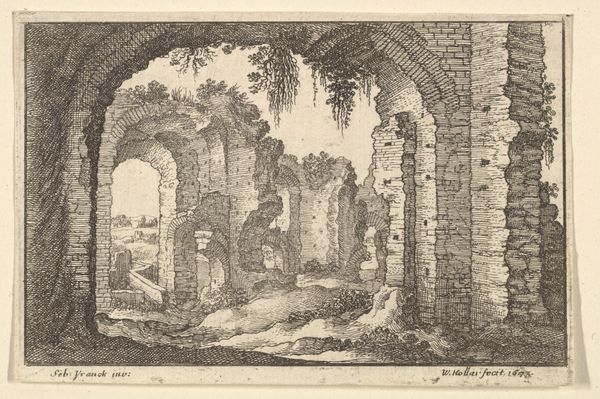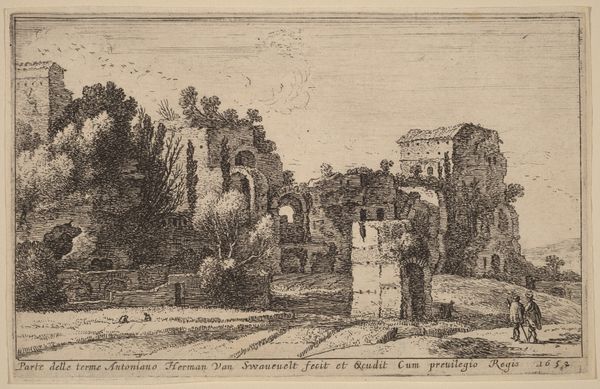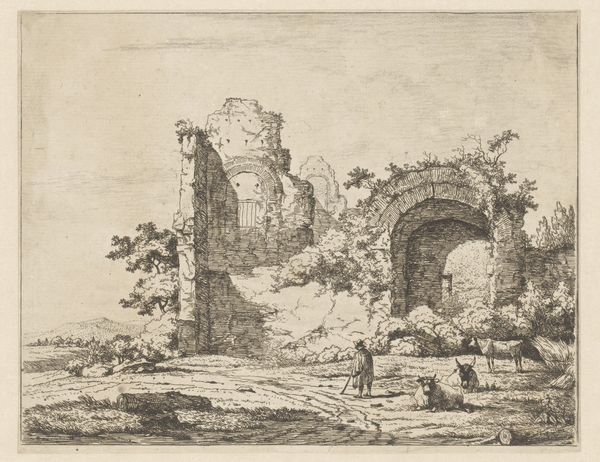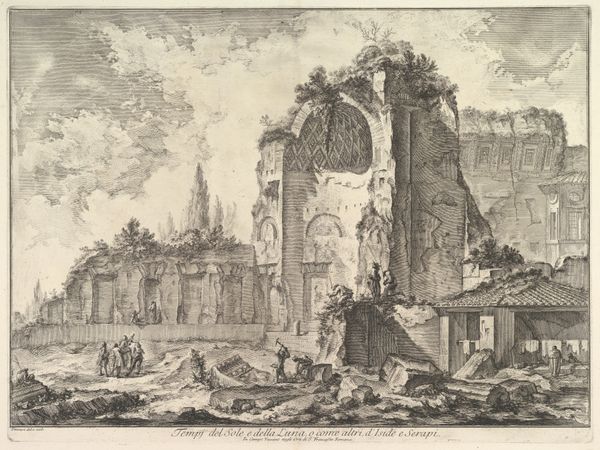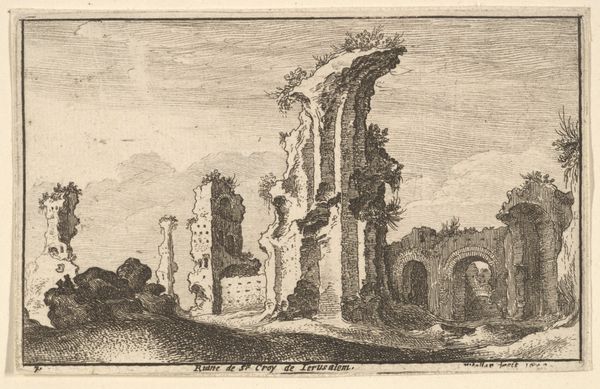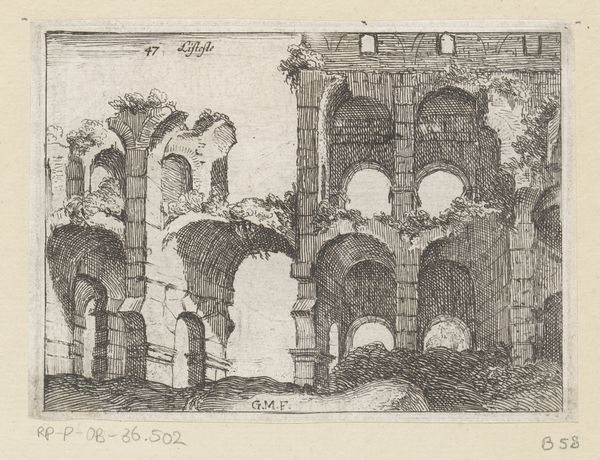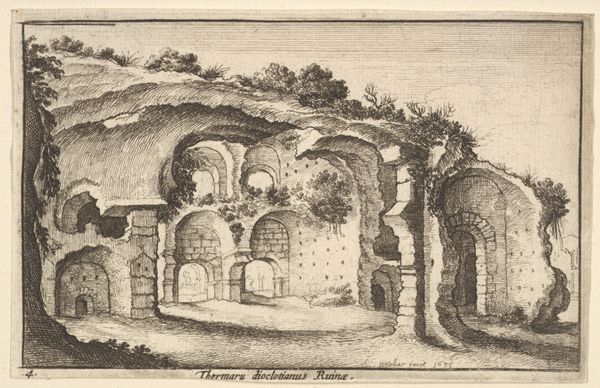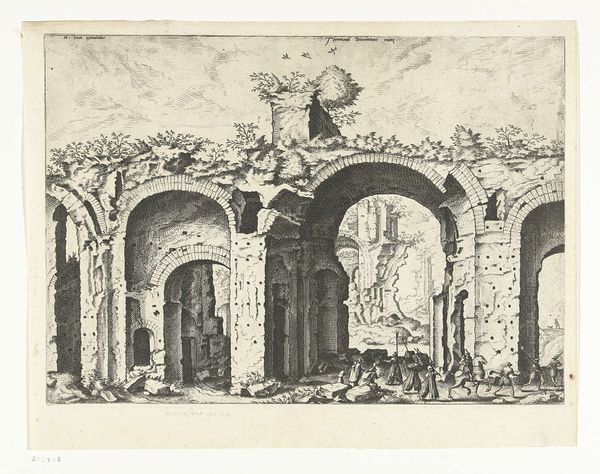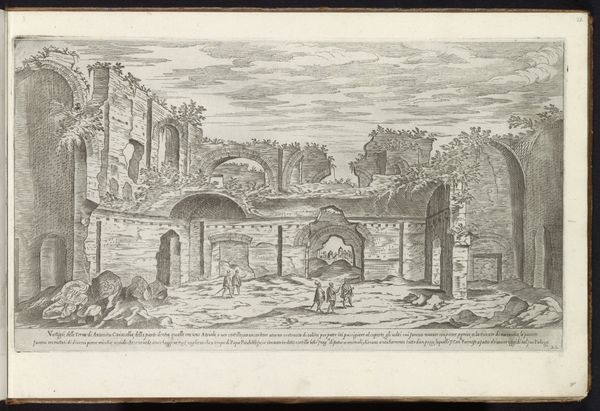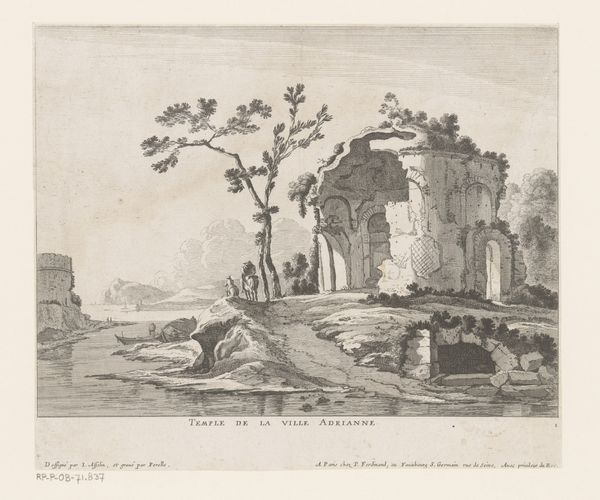
print, engraving, architecture
# print
#
landscape
#
history-painting
#
italian-renaissance
#
engraving
#
architecture
Dimensions: height 95 mm, width 127 mm
Copyright: Rijks Museum: Open Domain
Curator: Giovanni Battista Mercati's engraving, "Remains of the Temple of Minerva Medica in a Landscape," from 1629 presents us with a striking image. What strikes you first about it? Editor: Immediately, it's the contrast. The imposing ruin feels romantic yet melancholic, juxtaposed against what seems like a contemporary, more humble settlement in the background. It evokes a strong sense of temporal displacement, wouldn't you agree? Curator: Absolutely. Mercati was part of a larger artistic movement fascinated with ruins. Think about the socio-political climate: the Church was actively appropriating and sometimes dismantling pagan structures, literally overwriting earlier belief systems. How does this image play into that power dynamic? Editor: I think that's evident in the landscape’s own 'appropriation'. Nature reclaims the architectural hubris with persistent vines and encroaching vegetation. This engraving becomes a testament to the cyclical nature of power, to inevitable decay and ultimately to resilience, specifically of the natural world. Curator: Considering that engravings like these were often circulated widely, forming perceptions of Rome for those who may never visit, do you think it reinforced any specific cultural narratives? Editor: Undeniably. It could feed into the Renaissance obsession with classical antiquity while subtly critiquing the ephemeral nature of earthly power. Also, for whom was the “eternal city” eternal? Depicting Rome, or Roman authority as such, as ruins certainly opened that power to questions. Mercati uses architectural representation here as political commentary, consciously or not. Curator: Indeed. It's a visually complex work— layered in its historical, cultural, and emotional significance. It urges us to think about how the past is constructed, perceived, and utilized in the present. Editor: And perhaps more poignantly, how the act of memorializing, in this instance, architecture itself, impacts our experience and understanding of power. It's quite haunting when you ponder it.
Comments
No comments
Be the first to comment and join the conversation on the ultimate creative platform.

